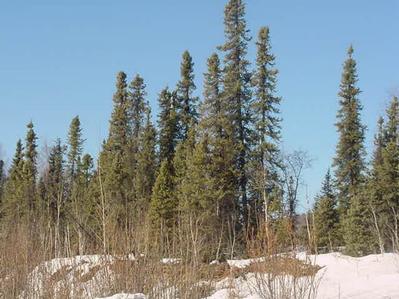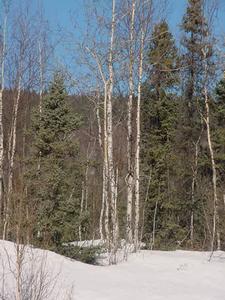19 March, 2002
Climate
Sunny, High 32, Low –7
The Science Behind Thermal Conductivity (keff),
continued
Snow density (p) is a measurement we use to calculate
thermal conductivity, which is one of two functions of
conductive heat flow. The other function is
temperature gradient.
Expressed in W/m/K (Watts per meter per Kelvin),
thermal conductivity is the ability to insulate and
conduct through an area. There are two equations used
depending on the mean snow density.
If the mean snow density is higher than .156
g/cm3
, then we use this equation.
(0.138 – 1.01p + 3.233p2)
If the mean snow density is equal or lower than
.156 g/cm3
, then this equation is used.
(.023 + .234p)
Let’s Practice
Recall mean snow density you calculated on March 10th,
(.1649073 g/cm3). This value is higher than .156
g/cm3, therefore we use the first equation.
A. keff = (0.138 – 1.01p + 3.233p2)
B. keff = (0.138 – 1.01 (.1649073) +
3.233(.1649073)2)
C. keff = (0.138 - 0.1665563 + 0.0879195)
D. keff = 0.0593632 W/m/K
If the mean snow density is .1388112 g/cm3, what would
be the thermal conductivity? See tomorrow’s journal to
check your answer.
Trees in Central Alaska
On our way to Poker Flat along Steese Highway, the
view of Fairbanks becomes veiled with black and white
spruce trees as well as aspen, birch, and poplar
trees. Due to permafrost, tree roots extend
horizontally immediately below the surface. The result
of shallow roots, trees are often found lopsided.
__________________________________________________
Do You Yahoo!?
Yahoo! Movies - coverage of the 74th Academy Awards®
http://movies.yahoo.com/

Combination of black and white spruce trees.

Trees near Jalpertia pond

Image from the UAF museum
Contact the TEA in the field at
.
If you cannot connect through your browser, copy the
TEA's e-mail address in the "To:" line of
your favorite e-mail package.
|
